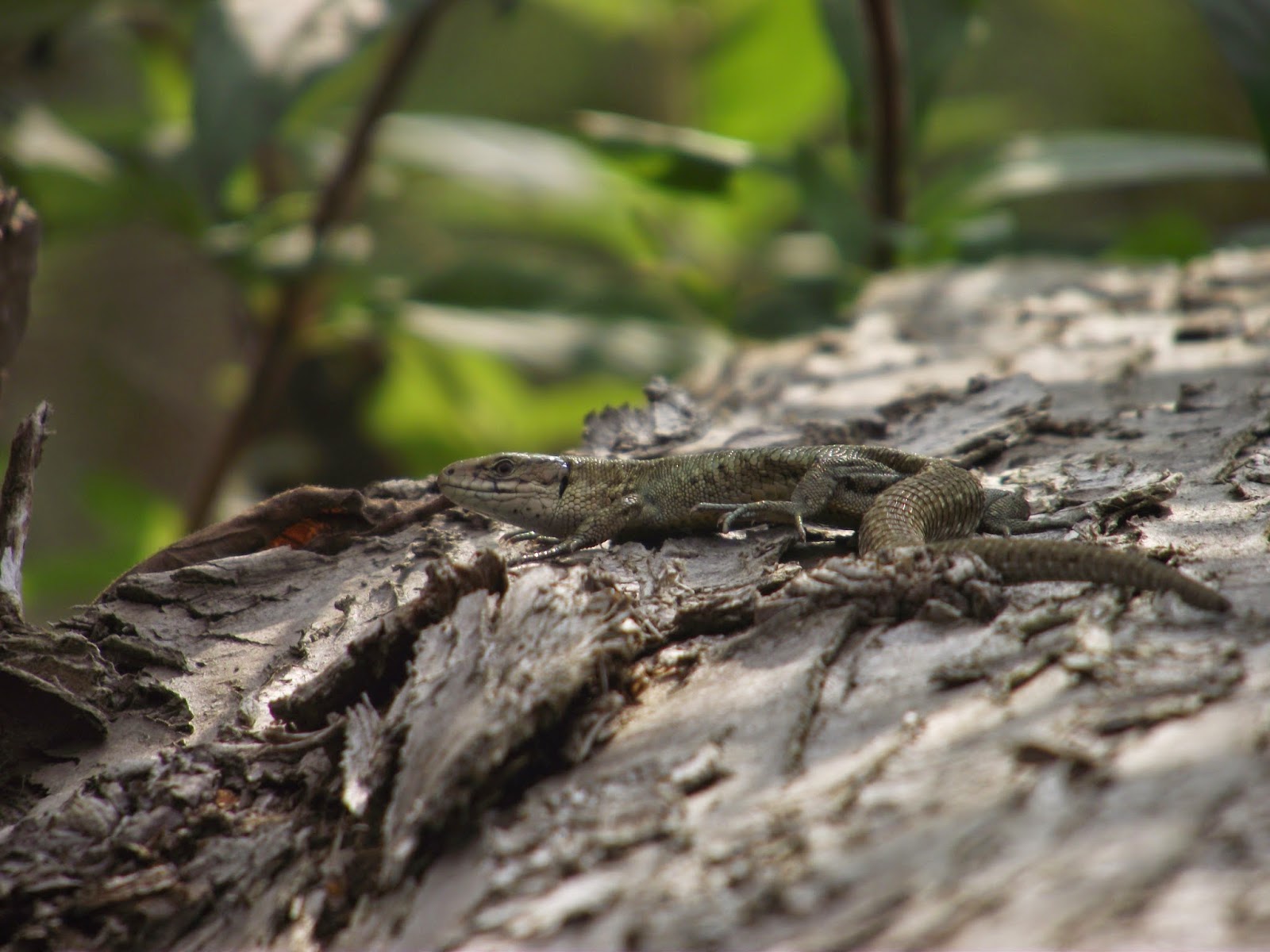Having returned from my travels, I've relished getting to know my local patch again over the last month. The vast range of species and habitats I'm fortunate enough to have around me are just as diverse and interesting as anything I encountered in Asia, and as the last month has proven, there's always more to see at home.
Inspired by the British Dragonfly Society's stand at the Rutland Birdfair in August, my friend and I decided to do a survey of a pond in a nearby forest. On the face of it the pond doesn't look anything special, and I really wasn't sure if we'd find much. But when you look closer, you see that the pond is actually a hotspot for wildlife.
 |
| This woodland pond proved to be a hotspot for wildlife |
After a few minutes of sitting quietly by the pond side, a number of bird species began to appear. Coal Tits sat singing in the trees on the little island in the pond, and a Jay flew past with an acorn in its mouth. I even caught my very first glimpse of a tree creeper climbing up the trunk of a browning silver birch. There were plenty of signs that other animals visit the pond often too. Deer, Badger and Fox tracks lay in the soft mud around the pond, and a nearby tree bore scratch marks from the antlers of a Fallow Buck which had been frayed on it in preparation for the rut.
 |
| Bucks 'fray' the velvet off their newly formed antlers in the autumn, leaving characteristic scratch marks on trees |
But it's once you delve under the water that things get really interesting. The pond is full of aquatic life, and with every sweep of the net we would bring up all sorts of pond-dwelling species. Water Boatman were caught by the dozen, and tapping gently on the surface of the water with a blade of grass revealed to us the 'Jaws-like' ferocity with which they attack their prey. Dragonfly and Alderfly larvae also frequently cropped up in our catch, and we were even lucky enough to salvage the empty case of a Dragonfly Nymph, which perhaps once belonged to one of the Southern Hawkers buzzing around us.
 |
| We think this empty Dragonfly nymph case once belonged to a Southern Hawker |
Elsewhere in the forest lies a pile of old logs, which we decided would be a good place to look for woodland insects. To my surprise and delight however, we found a species that I had never seen in the UK before: A Common Lizard. In total three sat basking in the sun on the logs, too cold yet to even seize the flies crawling over their scaly bodies. This provided the perfect opportunity to get a close up look at them, and once they had warmed up they skulked back into the log pile.
 |
| My first ever UK reptile sighting- A Common Lizard |
Meanwhile the Badgers seem to be doing well. They've been making the most of the damper weather in the past few weeks, coming out earlier in the evening to search for worms in the soft soil. I've been hearing a Barn Owl screeching in the fields behind my house every night too, so this month I hope to complete my mission from February and finally film a Barn Owl hunting.
 |
| The Badgers have been out looking for worms during the day |
This month also sees the start of the Fallow Deer rut, another spectacle I hope to film over the course of the season. Wish me luck!

